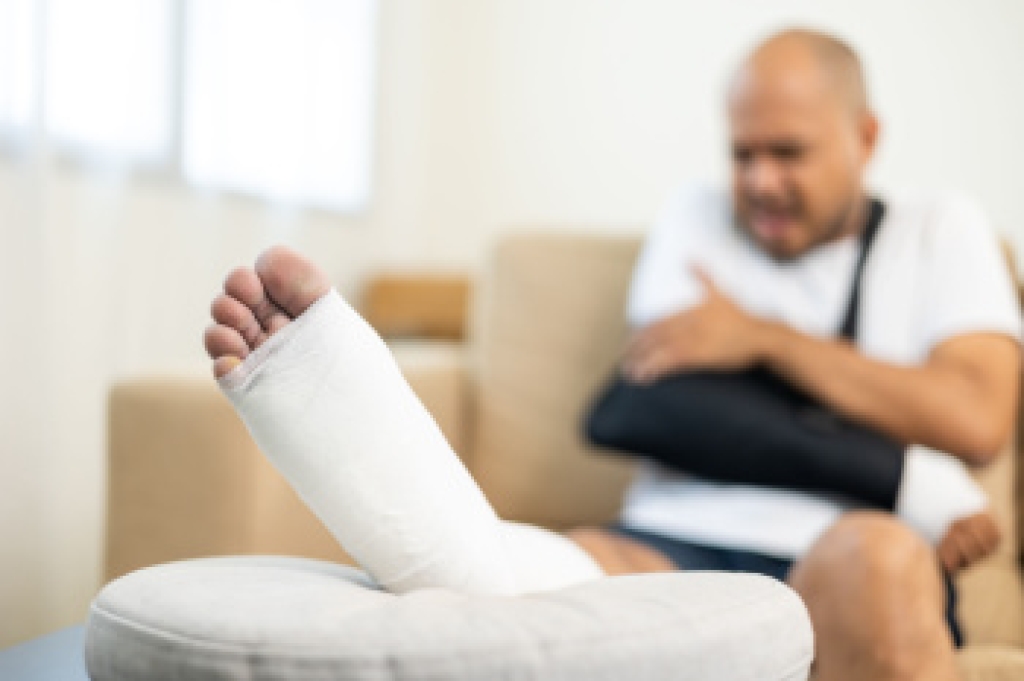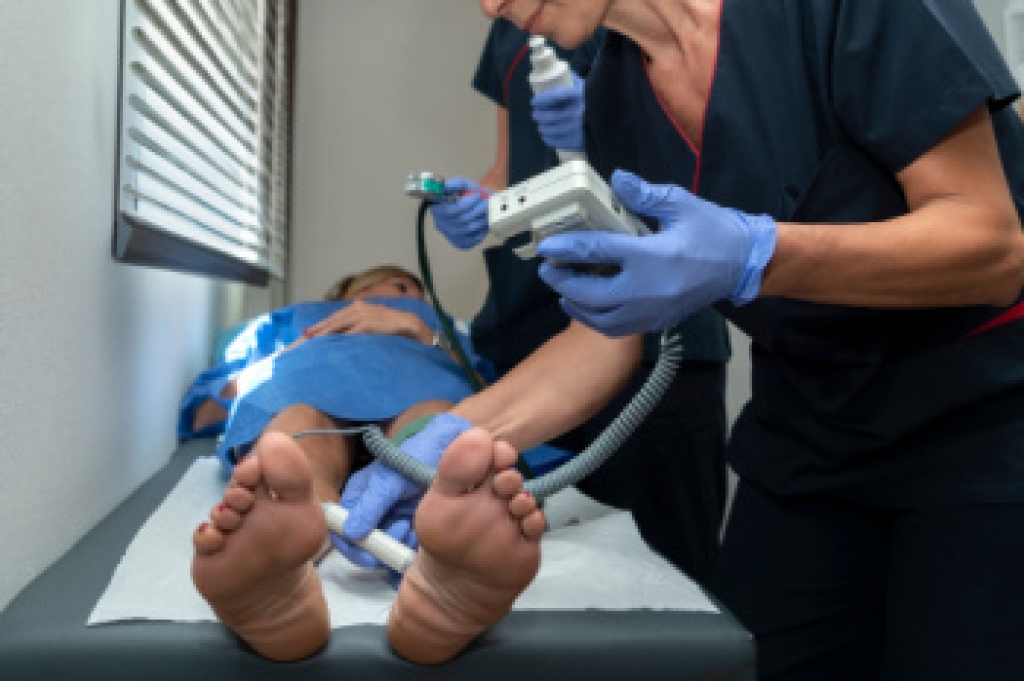
A broken foot involves a crack or complete break in one or more of the bones, usually caused by a fall, a heavy impact, or repetitive stress on the foot. Pain from a fracture is often sharp and constant, and swelling or bruising may appear quickly. In some cases, the foot may look deformed, and putting weight on it can be extremely painful. A sprained foot, however, affects the ligaments that hold the bones together and occurs when the foot twists or turns awkwardly. Sprains often cause tenderness and mild to moderate swelling but without bone displacement. Because both injuries can cause similar discomfort, it is difficult to know which has occurred without proper testing. A podiatrist can evaluate the injury, order imaging studies, and provide the appropriate treatment to promote full recovery. If you have seriously injured your foot, it is suggested that you schedule an appointment with a podiatrist for a diagnosis and appropriate treatment.
A broken foot requires immediate medical attention and treatment. If you need your feet checked, contact David Mansky, DPM from Mansky Podiatry. Our doctor can provide the care you need to keep you pain-free and on your feet.
Broken Foot Causes, Symptoms, and Treatment
A broken foot is caused by one of the bones in the foot typically breaking when bended, crushed, or stretched beyond its natural capabilities. Usually the location of the fracture indicates how the break occurred, whether it was through an object, fall, or any other type of injury.
Common Symptoms of Broken Feet:
- Bruising
- Pain
- Redness
- Swelling
- Blue in color
- Numbness
- Cold
- Misshapen
- Cuts
- Deformities
Those that suspect they have a broken foot shoot seek urgent medical attention where a medical professional could diagnose the severity.
Treatment for broken bones varies depending on the cause, severity and location. Some will require the use of splints, casts or crutches while others could even involve surgery to repair the broken bones. Personal care includes the use of ice and keeping the foot stabilized and elevated.
If you have any questions, please feel free to contact our office located in Hastings, MI . We offer the newest diagnostic and treatment technologies for all your foot care needs.




